Every year, when the temperatures rise again, the desire for a warm holiday grows stronger for many. But for people with a few pounds more on their hips, the thought of a flight can turn into a nightmare, because even with normal dimensions you don’t have a lot of space on the plane. It can also be uncomfortable for a slim person to sit next to a heavyweight.
In order to avoid such cases, we have put together 9 tips to make travelling easier:
Table of Contents
1. Ask for a Belt Extension
Belt extensions are carried on every aircraft. If the length of the belt is the problem and the seat spacing otherwise fits, you shouldn’t be afraid to ask for an extension. A belt extension can be a simple solution, especially for men whose problematic area is mainly their stomach.
Anyone who feels uncomfortable at the thought of asking for a seat belt extension in front of other passengers can discreetly ask the flight attendants for an extension when boarding.
2. Book Business Class
The advantages of booking a business class ticket for a long-haul flight are obvious: a wider seat, more legroom, and usually a longer belt.
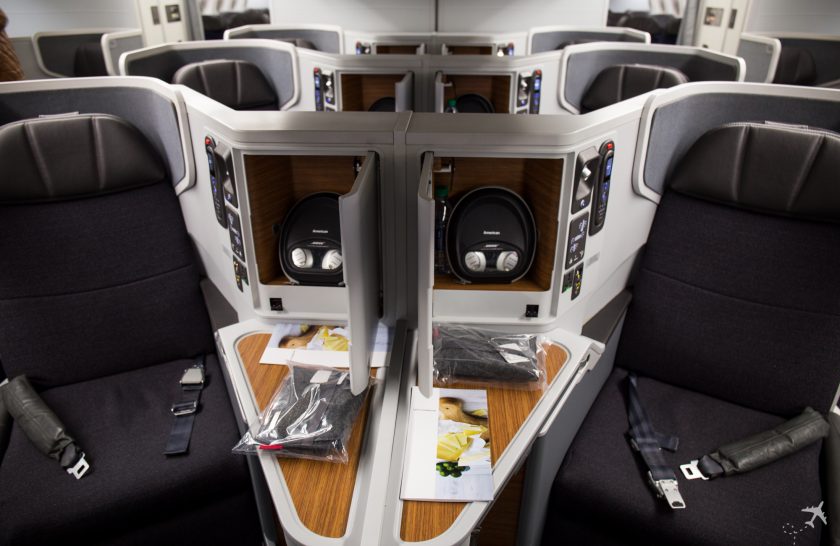
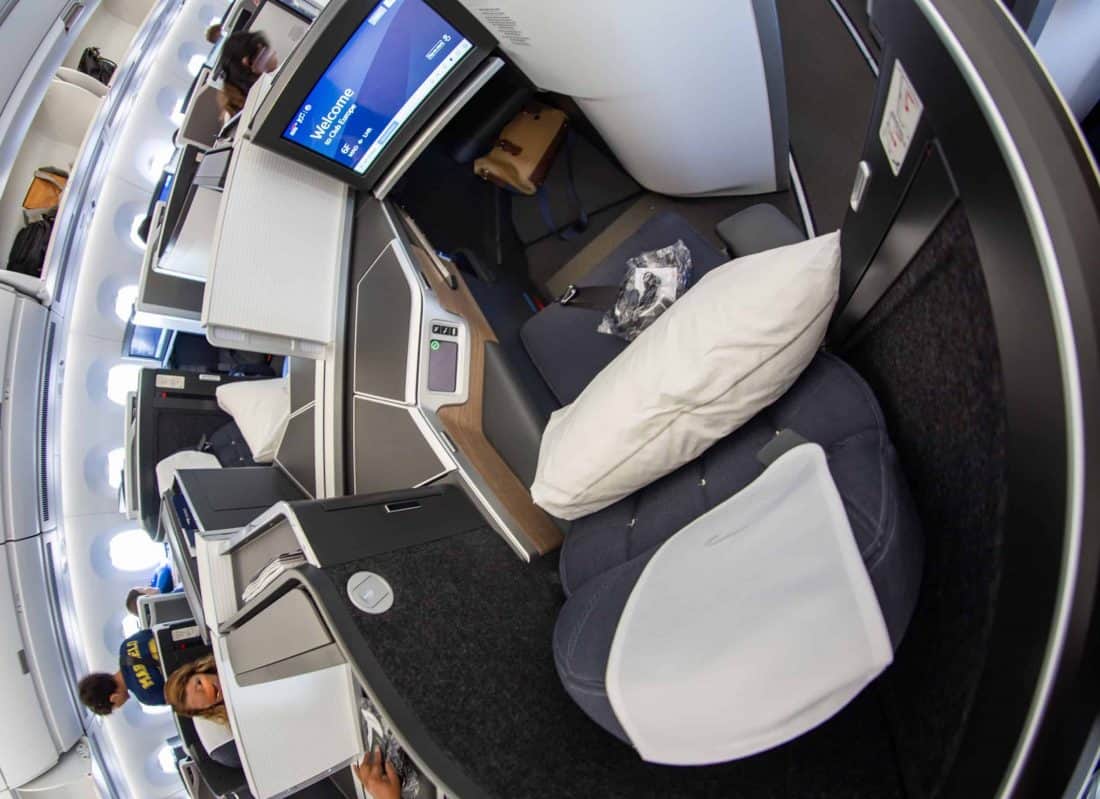
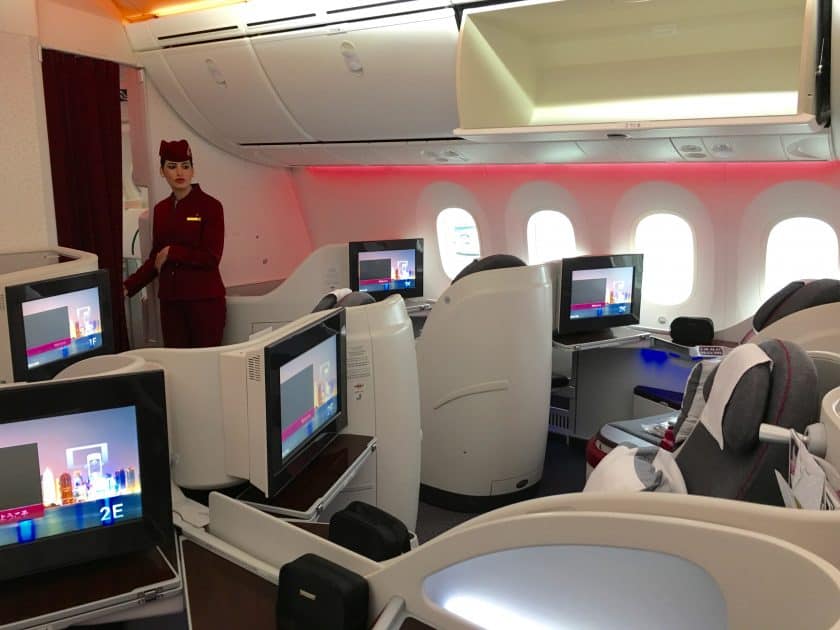
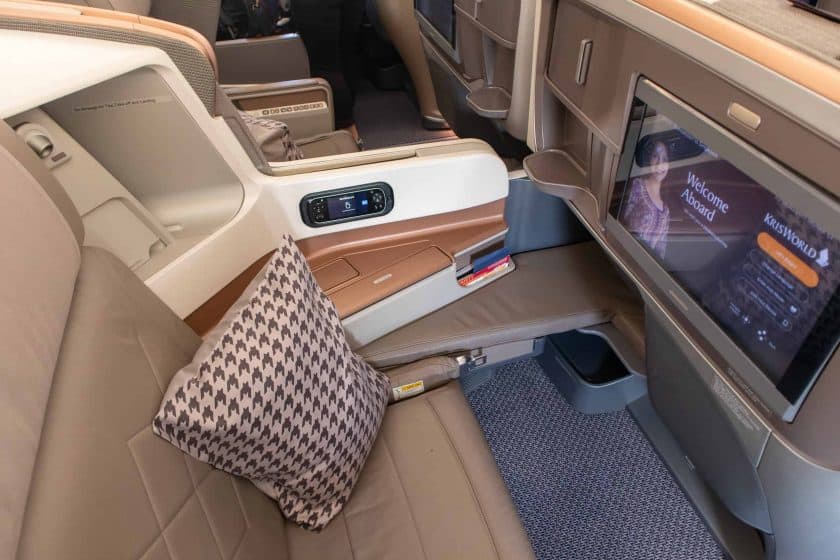
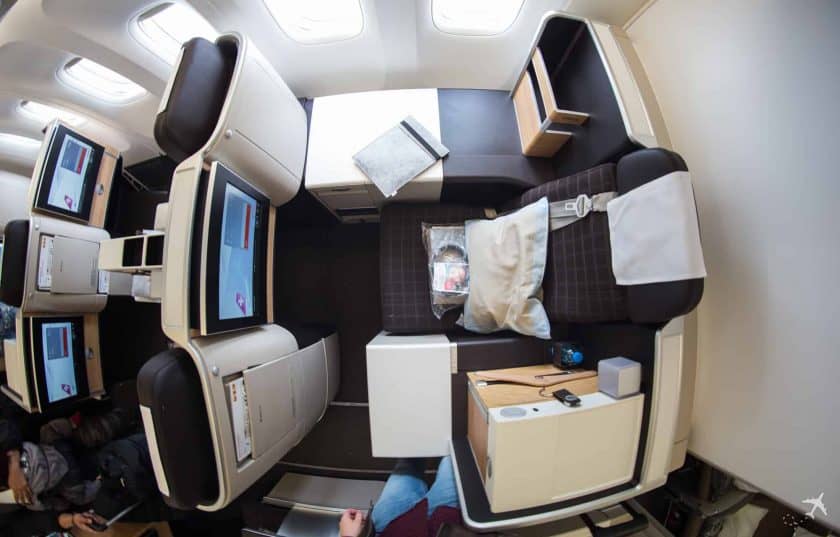
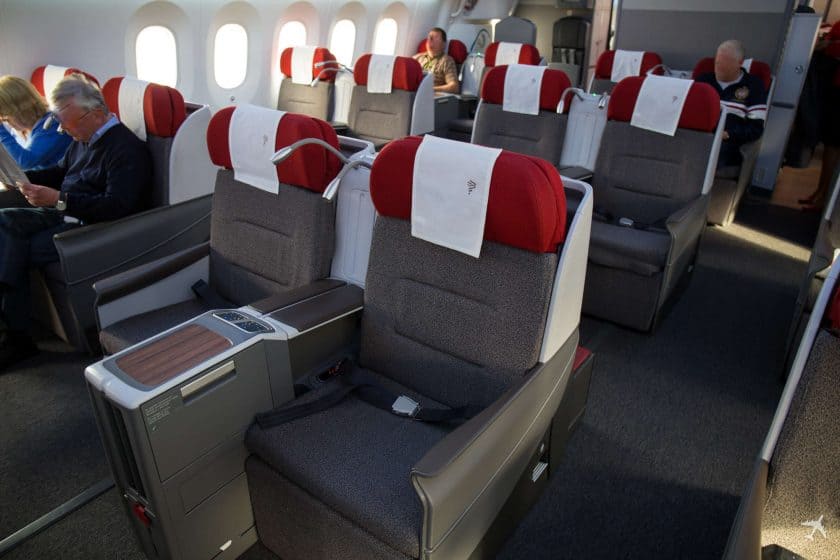
But a business class seat can also offer advantages on short journeys. The seats are not wider, but the free middle seat gives you the opportunity to spread your legs a bit, and the table can also be used in the middle seat instead of your own seat. In some cases, the distance between the seats is a little larger (more on this under tip 8).
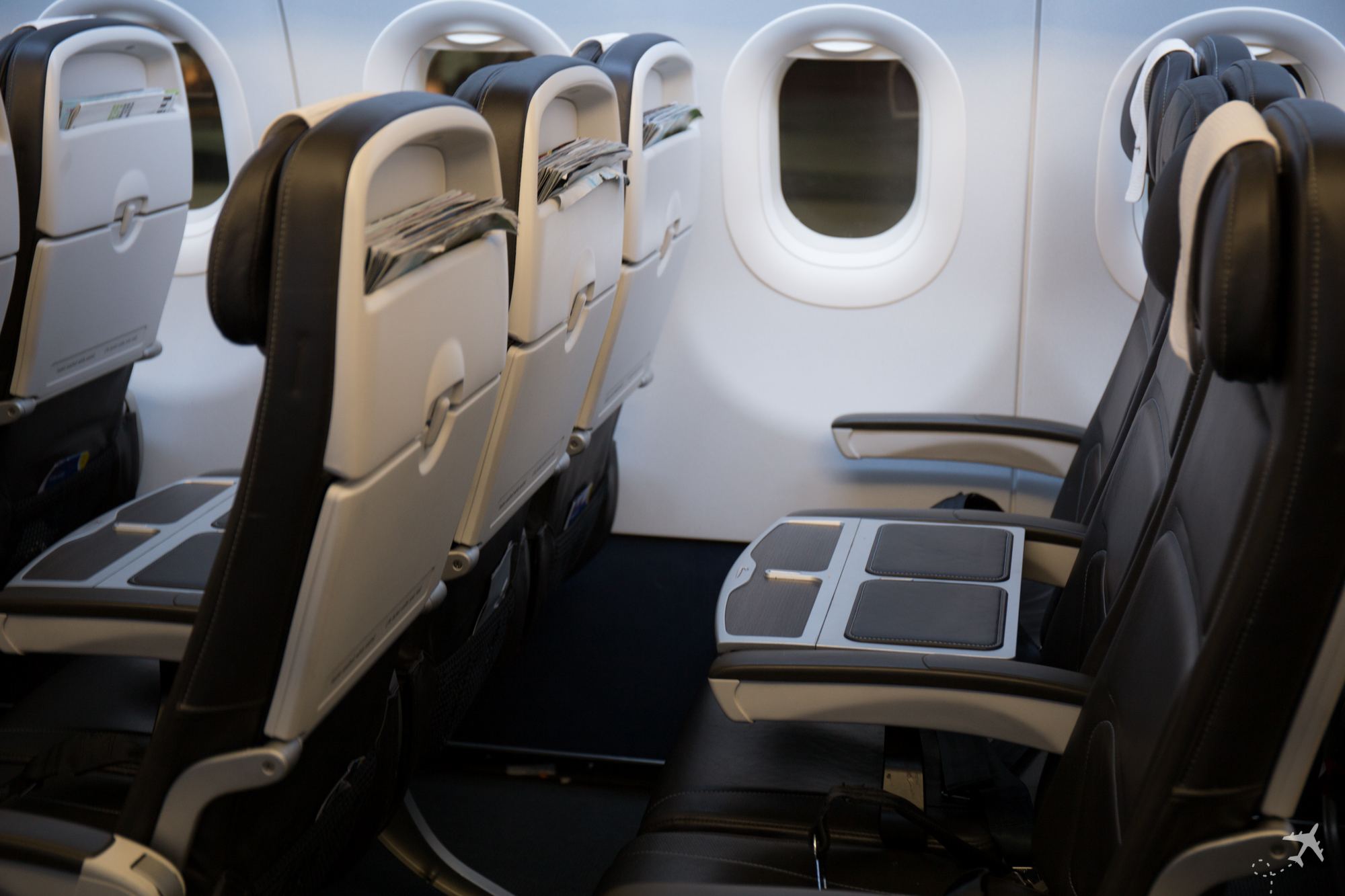
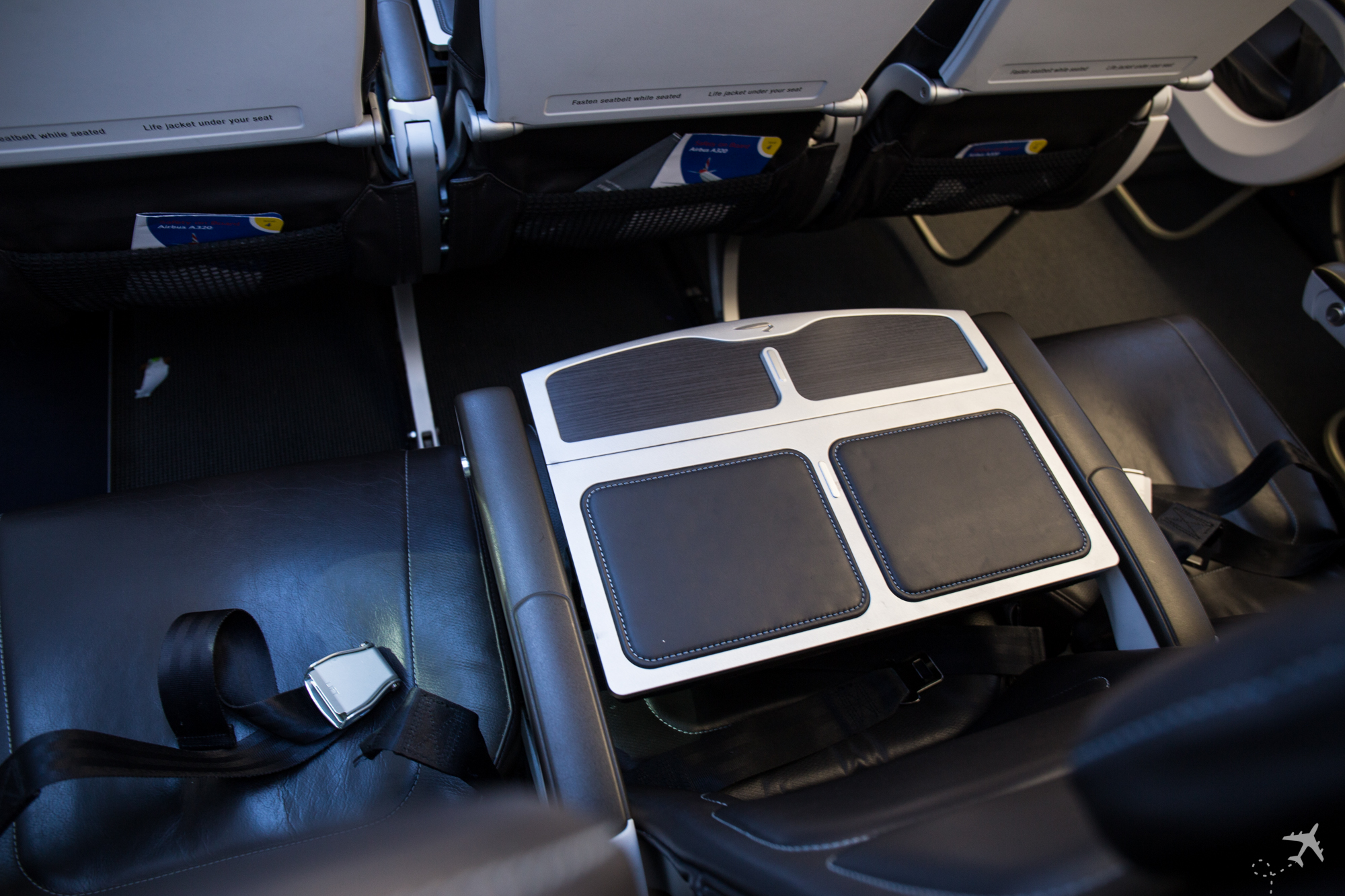
Better not book the first row! The armrests are mostly rigid and can’t be lifted, as the retractable table is stowed in them.
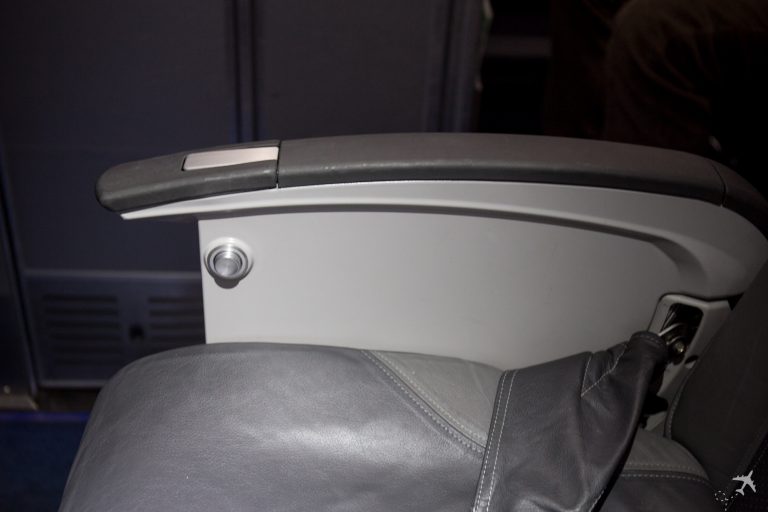
But not only the seat width, but also the belt length, or the mixture of both, is decisive. Air France is almost the only airline to list the seat widths in detail. They also indicate up to what body size the seats are suitable. On short-haul routes, the seats in economy and premium economy are suited for up to 135 cm in body circumference, in business class on short-haul and premium economy on long-haul for up to 150 cm, and in first class and business class on long-haul even up to 200 cm. This shows the clear differences between economy on short-haul routes and, e.g., business class on long-haul routes.
Of course, not everyone can afford a business-class ticket. However, if you don’t have a set destination, with a bit of luck you can book an error fare and get a cheap business class ticket.
3. Book Premium Economy
Many airlines now offer a third or fourth class on long-haul flights: Premium economy class. The tickets are usually not quite as expensive as business class tickets, but you have to expect twice the economy price.
Unfortunately, this class is not very standardized. Most airlines, however, install significantly higher quality seats in premium economy class than in economy class, which are also wider than normal economy seats due to the fact that fewer seats are installed per row. In addition, each seat has its own armrest and the seat spacing is usually significantly larger.
For example, the Airbus A380-800 from Lufthansa is equipped with a 3-4-3 configuration in economy and a 2-4-2 configuration in premium economy. This results in seats with a seat width of 48 cm instead of 46 cm and a seat pitch of 96 cm instead of 79 cm.
You can find a comparison of various premium economy class products here:
Premium economy class does, however, have a disadvantage. The armrests are always rigid. In economy class, you at least have a slight chance of having an empty seat next to you, and by lifting the armrest you are able to basically enjoy 2 seats. In premium economy, even if the seat next to you stays empty, you’ll have no benefit as the armrest can’t be lifted.
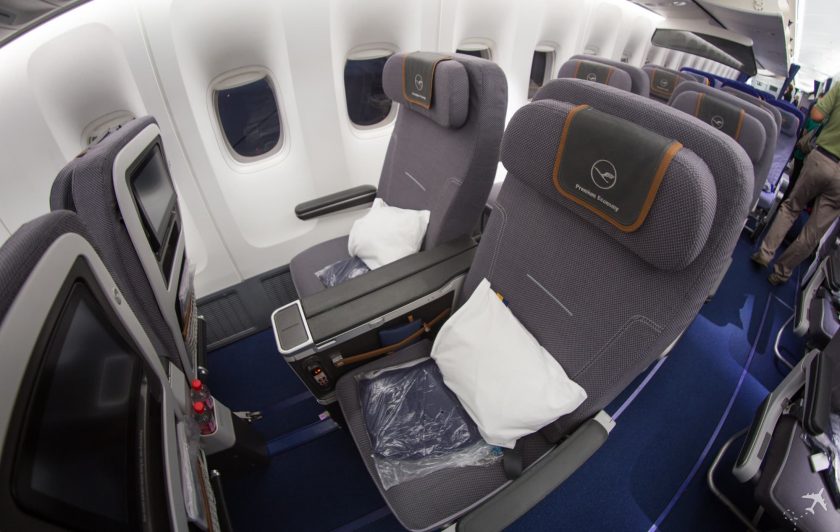
4. Book a Second Seat
All passengers should travel comfortably. For the airlines, “comfortable” means that the armrests should “effortlessly” fold up and down. If this is not the case, you are affecting your neighbour. In this case, airlines advise you to book a second seat.
Air France and KLM will sell a second seat for 75% of the flight price without taxes & fees (whether surcharges, which usually make up a large part of the flight price, are also waived is questionable). Both seats must be booked for one person and only include luggage for one person. If the flight is not fully booked, both airlines will even refund the price for the second seat upon request. This basically makes them the best long-haul airline for overweight passengers.
If you’re flying within the US, Southwest should be your preferred choice, as they do not charge for additional seats for overweight passengers. You can either book 2 seats and then get a refund for the second seat after your flight, or book 1 and let the Southwest staff at the airport know, that you need an additional seat. The first option is better, as there’s no chance of the flight being fully booked and you not getting a seat. The second option is only better if you’re short on cash and don’t want to put up the money for the second seat, even if you’re getting that money back later.
The coronavirus pandemic has recently led some airlines to sell vacant middle or adjacent seats (at least on some flights). It remains to be seen whether this will last. Here is an overview:
- Eurowings starting at €10
- Condor starting at €40
- Lufthansa starting at €59
- Turkish Airlines
5. Ask for a Different Seat When Boarding
Sometimes it’s hard to understand the airlines’ allocation of seats: your own row of seats is full, while others appear to be completely empty. If you notice during boarding that the booked travel class is not fully booked, but your own row is, you shouldn’t be afraid to speak to the flight attendants, because once boarding is complete and there are still places available, it is seldom a problem to change seats. Usually, it’s first come, first served. So it’s best to ask immediately when boarding and to change seats after the boarding completed announcement.
But be careful: this tip cannot be planned. If there is no more space available, the flight attendants cannot do anything about it.
6. Look at the Seat Map
The seat map shows the seat occupancy for every flight. This is actually not publicly accessible, but in our article Seatmap: Is the seat next to me still empty?, we will show you ways how you can still see the seat map because when you reserve a seat, you can position yourself in such a way that the probability of a free seat next to you is very high. Here, too, there is, unfortunately, no guarantee that there will be an empty seat next to you. So this tip is more for gamblers!
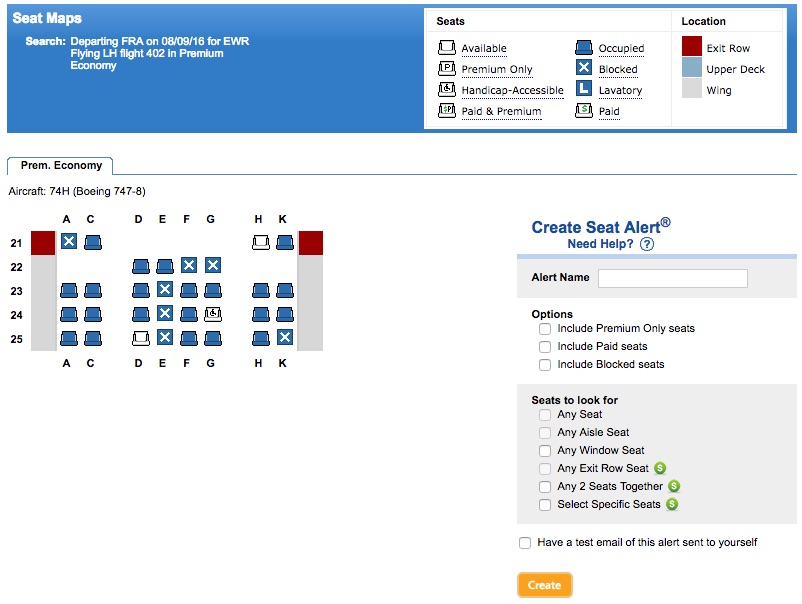
7. Do not Select an XL Seat
Some airlines offer XL seats in economy class. Sounds like a dream at first. However, the XL only relates to legroom and not to the seat width. If 15 cm more legroom helps you to feel good, this is certainly a solution. However, the airlines charge a hefty surcharge for this
The XL seats are often located at the emergency exit. But that, in turn, can lead to problems:
8. Do not Select an Emergency Exit Seat
Airlines often charge a lot of money for emergency exit seats, because there is “more space” there. Often these seats are also sold as XL seats. Again, the extra space only relates to legroom. At the same time, there are usually no normal armrests at the emergency exit, but rather rigid armrests that cannot be folded up. So if you need more space at your hips, you shouldn’t sit at the emergency exit.
It can even lead to real problems, including being expelled from the aircraft if you are physically restricted and sit at the emergency exit.
Here’s an example at Condor:
Safety regulations issued by the authorities prohibit certain persons from sitting next to the emergency exit. These passengers are: […] Passengers with limited mobility due to body size, illness or age
Information about XL-Seats at Condor
Air France breaks this down in more detail:
[…] Extra legroom seats cannot therefore be assigned to the following persons: […] passengers whose body mass (waist larger than 135 cm / 53 in) is likely to restrict access to an emergency exit […]
General Conditions of Sale for Seat Options on Air France flights
Some airlines allow it anyway and distribute belt extensions at the emergency exit, but everyone has to assess the risk themselves.
9. Check SeatGuru
SeatGuru is a website that shows over 1,000 different seat maps of almost every airline. You can either search specifically for the plane using your flight number and flight date, or you can generally click through the airline’s seat maps.
Based on user experience, some seats are colour-coded and have additional information. This can be information about more legroom or about the proximity to toilets and the resulting increased volume.
The most important detail at Seatguru is the overview of the seat spacing and seat widths. These are given in inches and have to be converted accordingly into centimetres (1 inch = 2.54 cm). It must be noted that the pitch (seat spacing) is measured from one point on one seat to exactly the same point on the next seat and is not to be equated with legroom.
More tips?
Do you have any further tips or even experiences, then you are welcome to leave a comment! However, we will delete inappropriate comments on this topic immediately.
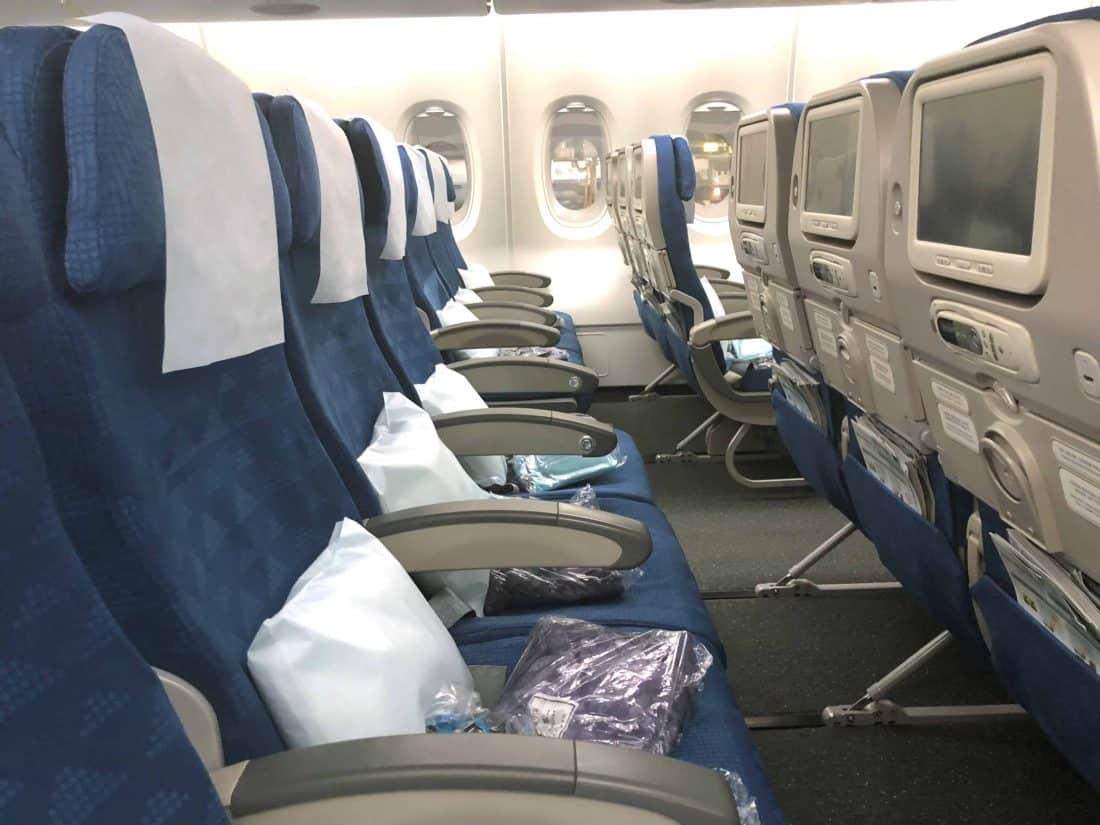
Comment (1)
It could also be more about the comfort of your fellow-travellers. I have my experiences with a person “with a couple of pounds too much”. This person became very angry when I insisted that the arm rest would go down – in that way somewhat limiting their invasion of my own personal space.
With a certain size you should know that you do not fit in just one seat and that – when all seats are sold out – you invade other peoples space and cause discomfort for them.